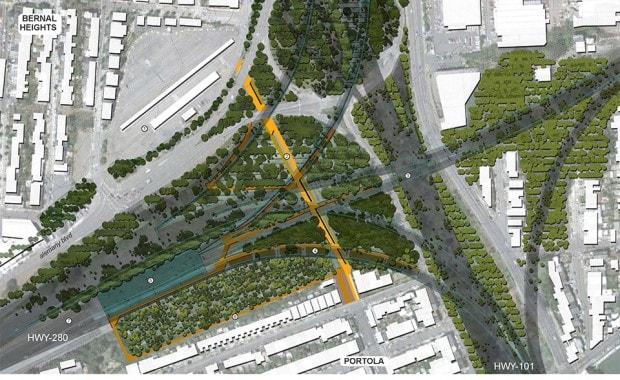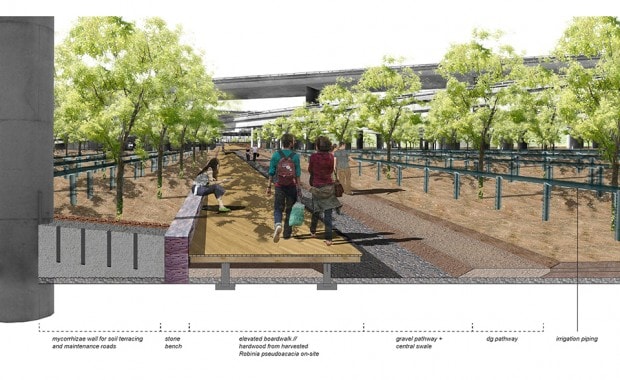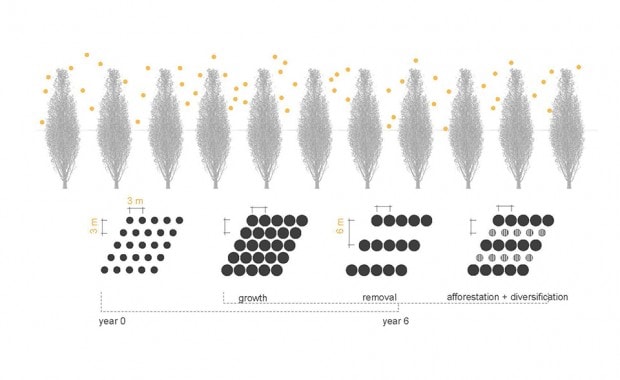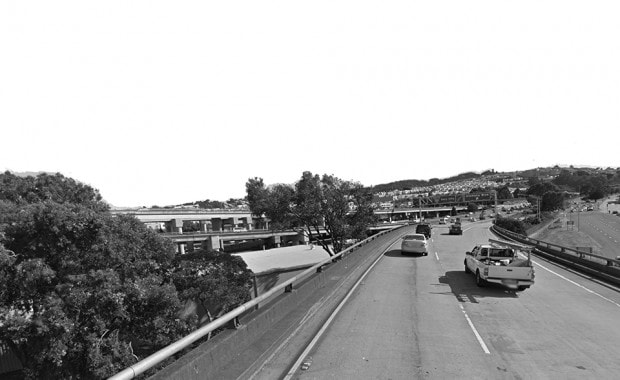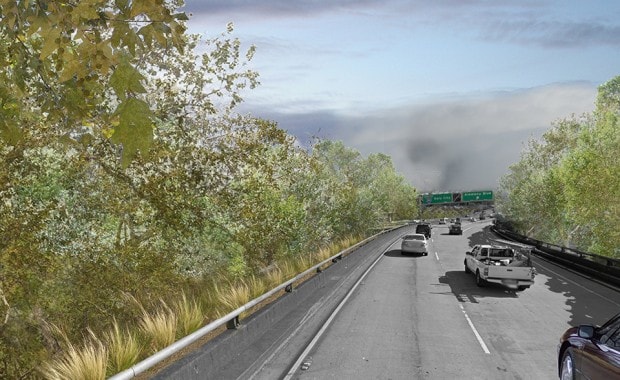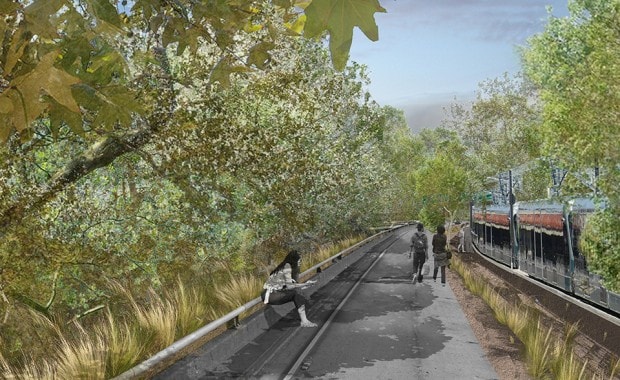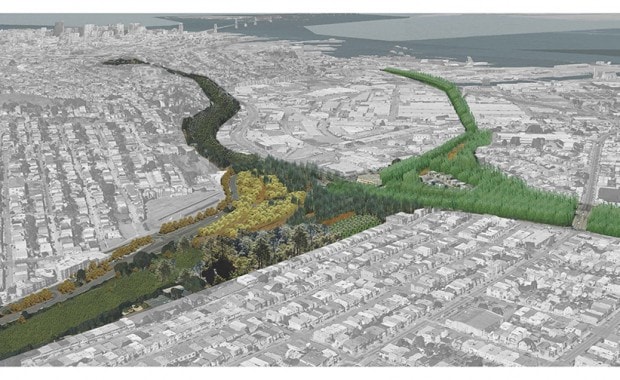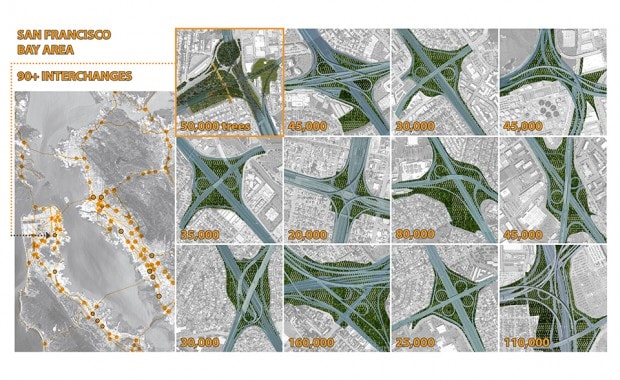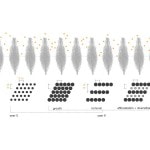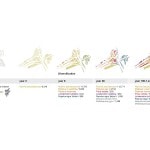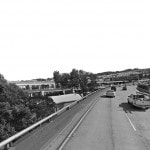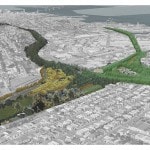Project: 50,000 Trees
Location: San Francisco, CA
Designer: Sarah Moos
Year: 2013
Program: University of California, Berkeley
Faculty Advisor: Judith Stilgenbauer
Project Description: Freeways and highway overpasses are often seen as the epitome of environmental destruction in the urban landscape. Yet the complex spaces below and around urban freeways may be productively re-imagined as beneficial working landscapes, deploying trees en masse to buffer the harmful effects of these traffic conduits. This project explores how freeway urban forests could strategically offset a significant part of the city’s carbon emissions at the source.
In this project, a 30-acre site of underutilized space beneath a multi-level interchange in San Francisco, CA is envisioned as a productive urban forest. The design for the site has three primary goals. First, it seeks to plant a robust forest of enough trees to offset a portion of the annual CO2 emissions from the adjacent freeway. Second, it devises an irrigation system that builds upon existing infrastructure to irrigate the forest and to reduce persistent stormwater flooding on this former marshland. Third, it establishes pedestrian pathways and provides amenities throughout the forest to create a memorable and interactive landscape. The forest is a new urban landscape that emerges over time, transforming the driving experience at the freeway level and establishing places for pedestrian interaction at street level. If the freeway is rendered obsolete in the future, the interchange will transition from a mono-functional freeway into a multi-use interchange for pedestrians, public transportation, flora, and fauna amid a dense urban forest.
The project’s design also takes advantage of innovative forest sequestration techniques, resulting in a cycling strategy that alternates phases of growth, partial removal, afforestation, and diversification. This compact planting and maintenance strategy allows for the sequestration CO2 and other emitted compounds within a significantly reduced footprint.
The estimated $1.7 million of annual urban ecosystem services generated at the interchange – including the value of trees, soil, captured water, wind energy, and jobs – can then be used over time to expand the afforestation effort to at least 90 other underutilized freeway right-of-ways throughout the entire San Francisco Bay Area. Taken together, the resulting urban forest would become a “new and powerful” sequestration infrastructure functioning at the metropolitan scale.
Additional Information:
The City of San Francisco has utilized the research, analysis, and design of this strategy to inform aspects of the 2014 Urban Forest Master Plan — a component of the One Bay Area Plan that is aimed at offsetting emissions through innovative solutions.
This project received the 2013 National ASLA Honor Award in General Design.
Featured in Scenario 4: Building the Urban Forest
| previous project | next project |
